Blog Archives
Seaton Sluice Boy Comes to United States for Life Changing Foot Surgery
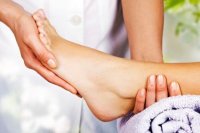 Callum Brown, a school boy from Seaton Sluice recently had to travel to the United States for an operation that would get him walking again. Brown has suffered from cerebral palsy causing him to be wheelchair bound since the cords of his heels were consistently collapsing. Surgeons suggested wearing breaking his outer foot bones in order to add a piece making it longer than the cords. This procedure creates a foundation for his feet that will allow him to walk without any aids.
Callum Brown, a school boy from Seaton Sluice recently had to travel to the United States for an operation that would get him walking again. Brown has suffered from cerebral palsy causing him to be wheelchair bound since the cords of his heels were consistently collapsing. Surgeons suggested wearing breaking his outer foot bones in order to add a piece making it longer than the cords. This procedure creates a foundation for his feet that will allow him to walk without any aids.
Foot surgery is sometimes necessary to fix a foot ailment. If you have any concerns about your foot and ankle needs contact Dr. Sharon L. Pletcher of Pennsylvania. Our doctor will treat your foot and ankle needs.
When Is Surgery Necessary?
Foot and ankle surgery is generally reserved for cases in which less invasive, conservative procedures have failed to help with the problem. Some of the cases in which surgery may be necessary are:
- Removing foot deformities like bone spurs and bunions
- Severe arthritis that has caused bone issues
- Cosmetic reconstruction
- Bunionectomy for painful bunions
- Surgical fusion for realignment of bones
- Neuropathy decompression surgery to treat nerve damage
What Types of Surgery Are There?
The type of surgery you receive will depend on the nature of the problem you have. Some of the possible surgeries include:
Benefits of Surgery
Although surgery is usually a last resort, it can provide more complete pain relief compared to non-surgical methods and may allow you to finally resume full activity.
Surgical techniques have also become increasingly sophisticated. Techniques like endoscopic surgery allow for smaller incisions and faster recovery times.
If you have any questions please feel free to contact our office located in State College, PA. We offer the newest diagnostic tools and technology to treat your foot and ankle needs.
New Zealand Study Finds Tomatoes Trigger Gout
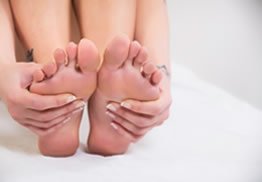 According to a research conducted in New Zealand, where there is the most gout cases compared to anywhere else in the world, tomatoes may trigger gout attacks. In a survey consisting of 2,051 New Zealand citizens it was noted that tomatoes along with seafood, alcohol, and red meat are consistent triggers of gout. N. Lawrence Edwards, MD who was not directly involved with the research states that although this knowledge helps gout sufferers control their attacks, food is just one factor in gout management. “People can’t go on a restrictive enough diet so that their uric acid will be lowered to the point that they’re not at risk for gout flares,” he mentions.
According to a research conducted in New Zealand, where there is the most gout cases compared to anywhere else in the world, tomatoes may trigger gout attacks. In a survey consisting of 2,051 New Zealand citizens it was noted that tomatoes along with seafood, alcohol, and red meat are consistent triggers of gout. N. Lawrence Edwards, MD who was not directly involved with the research states that although this knowledge helps gout sufferers control their attacks, food is just one factor in gout management. “People can’t go on a restrictive enough diet so that their uric acid will be lowered to the point that they’re not at risk for gout flares,” he mentions.
Gout is a foot condition that requires certain treatment and care. If you have any concerns regarding gout, consult with Sharon L. Pletcher from Pennsylvania. Our doctor will assist you with all of your foot and ankle needs.
What is Gout?
Gout is a type of arthritis caused by a buildup of uric acid in the bloodstream. It often develops in the foot, especially the big toe area, although it can manifest in other parts of the body as well. Gout can make walking and standing very painful and is especially common in diabetics and the obese.
People typically get gout because of a poor diet. Genetic predisposition is also a factor. The children of parents who have had gout frequently have a chance of developing it themselves.
Gout can easily be identified by redness and inflammation of the big toe and the surrounding areas of the foot. Other symptoms include extreme fatigue, joint pain, and running high fevers. Sometimes corticosteroid drugs can be prescribed to treat gout, but the best way to combat this disease is to get more exercise and eat a better diet.
If you have any questions, please feel free to contact our office located in State College, PA. We offer the newest diagnostic and treatment technologies for all your foot care needs.
Diabetic Patients Should Check Their Own Feet Twice a Day
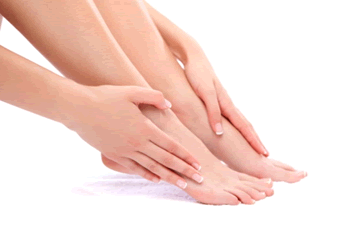 Robert P. Thompson, executive director of non-profit Institute of Preventative Foot Health recently spoke at the American Association of Diabetics Ecuador Annual Meeting 2015 where he stressed the importance of diabetic foot checkups. Thompson stated that medical professionals should do routine checkups on diabetic feet every visit and patients suffering from diabetes should keep an eye on their own feet twice a day. Regular foot checks are a major component of diabetes management where reducing the odds of neuropathy, inability to feel pain, slow wound healing, infection, ulcers, and amputation are reduced.
Robert P. Thompson, executive director of non-profit Institute of Preventative Foot Health recently spoke at the American Association of Diabetics Ecuador Annual Meeting 2015 where he stressed the importance of diabetic foot checkups. Thompson stated that medical professionals should do routine checkups on diabetic feet every visit and patients suffering from diabetes should keep an eye on their own feet twice a day. Regular foot checks are a major component of diabetes management where reducing the odds of neuropathy, inability to feel pain, slow wound healing, infection, ulcers, and amputation are reduced.
If you are suffering from diabetes or have any other concerns about your feet, contact Dr. Sharon L. Pletcher of Pennsylvania. Our doctor will diagnose and treat your foot and ankle needs.
Diabetic Foot Care
Diabetes affects millions of people every year. Diabetes can damage blood vessels in many parts of the body, including the feet. Because of this, taking care of your feet is essential if you have diabetes, and having a podiatrist help monitor your foot health is highly recommended.
The Importance of Caring for Your Feet
- Routinely inspect your feet for bruises or sores.
- Wear socks that fit your feet comfortably.
- Wear comfortable shoes that provide adequate support.
Patients with diabetes should have their doctor monitor their blood levels because blood sugar levels play such a huge role in diabetic care. Monitoring these levels on a regular basis is highly advised.
It is always best to inform your healthcare professional of any concerns you may have regarding your feet, especially for diabetic patients. Early treatment and routine foot examinations are keys to maintaining proper health, especially because severe complications can arise if proper treatment is not applied.
If you have any questions, please feel free to contact our office in State College, PA. We offer the newest diagnostic and treatment technologies for all your foot and ankle needs.
New Surgical Hammertoe Procedure Reduces Risks of Infection
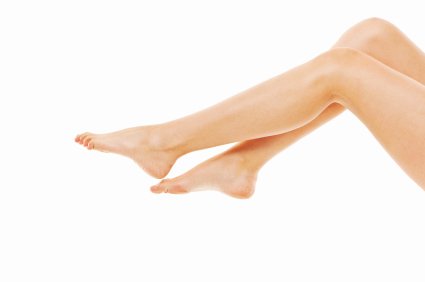 Catherine Linthicum recently underwent a new form of surgery to fix the pain caused by her hammertoes. With the help of a new device called Hammerlock 2, a clip is inserted into the toe and nitinol expands and fixes the downward bent position of the toes. Accordingly the new implants lessen the risk of something moving out of place while the standard surgical hammertoe methods have a common risk of swelling and infection.
Catherine Linthicum recently underwent a new form of surgery to fix the pain caused by her hammertoes. With the help of a new device called Hammerlock 2, a clip is inserted into the toe and nitinol expands and fixes the downward bent position of the toes. Accordingly the new implants lessen the risk of something moving out of place while the standard surgical hammertoe methods have a common risk of swelling and infection.
Hammertoes can be a painful condition to live with. If you are suffering from hammertoes, contact Dr. Sharon L. Pletcher of Pennsylvania. Our doctor will treat your foot and ankle needs.
Hammertoe
Hammertoe is a foot deformity that affects the joints of the second, third, fourth, or fifth toes of your feet. It is a painful foot condition in which these toes curl and arch up, which can often lead to pain when wearing footwear.
Symptoms
- Pain in the affected toes
- Development of corns or calluses due to friction
- Inflammation
- Redness
- Contracture of the toes
Causes
- Genetics – people who are genetically predisposed to hammertoe are often more susceptible
- Arthritis – because arthritis affects the joints in your toes, further deformities stemming from arthritis can occur
- Trauma – direct trauma to the toes could potentially lead to hammertoe
- Ill-fitting shoes – undue pressure on the front of the toes from ill-fitting shoes can potentially lead to the development of hammertoe
Treatment
- Orthotics – custom made inserts can be used to help relieve pressure placed on the toes and therefore relieve some of the pain associated with it
- Medications – oral medications such as anti-inflammatories or NSAIDs could be used to treat the pain and inflammation hammertoes causes. Injections of corticosteroids are also sometimes used
- Surgery – in more severe cases where the hammertoes have become more rigid, foot surgery is a potential option
If you have any questions please contact our office located in State College, PA. We offer the newest diagnostic and treatment technologies for all your foot and ankle needs.
Professional Runners Can Compete Barefoot with Proper Training
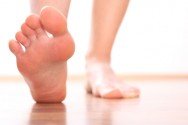 Barefoot running is most often popularized as a recreational sport; however, many professional runners have rightfully competed in races without proper footwear. Before deciding to compete in a race while running barefoot, it is best to train barefoot first to reduce injury. Professional runners such as Abebe Bikila, Zola Budd, P.C. Suppiah, and Tegla Loroupe have all ran barefoot in competitions, but because they either trained barefoot or at the time, did not have access to shoes. Additionally, distance running is the only competition where running barefoot seems feasible since there are no jumps or sprints that could cause detrimental injury to the lower extremities.
Barefoot running is most often popularized as a recreational sport; however, many professional runners have rightfully competed in races without proper footwear. Before deciding to compete in a race while running barefoot, it is best to train barefoot first to reduce injury. Professional runners such as Abebe Bikila, Zola Budd, P.C. Suppiah, and Tegla Loroupe have all ran barefoot in competitions, but because they either trained barefoot or at the time, did not have access to shoes. Additionally, distance running is the only competition where running barefoot seems feasible since there are no jumps or sprints that could cause detrimental injury to the lower extremities.
Barefoot running has its own share of benefits and disadvantages. To learn more about this trend, consider speaking to Dr. Sharon L. Pletcher of Pennsylvania. Our doctor will explain the facts of barefoot running and help you decide if it’s a practice you’d like to take up.
Barefoot Running
The Impact of Barefoot Running
-Running without shoes changes the motion of your running, as most running is done by landing on the heel of the feet.
-Running barefoot requires a different way of running; the landing is done on the front part of the feet.
The Advantages of Barefoot Running
-When running and landing on the front feet, the impact on the feet and ankle is reduced, this can reduce stress injuries.
-It strengthens muscles in the feet and ankles and the lower legs.
-Balance of the body is improved and there is a greater sensory input from the feet to the rest of the body.
The Drawbacks of Barefoot Running
-No protection while running, makes it likely that runners will land on sharp objects and scrapes, bruises and cuts on the feet will result.
-Blisters may form.
-Possibility of plantar fascia problems.
-Risk of getting Achilles tendonitis.
So what can runners do to make barefoot running safe? It’s best to make a slow transition from running shoes to barefoot running. Once the feet begin to adjust, try walking, then jogging and gradually increasing the distance. Minimalist running shoes may also be an option.
If you have any questions, please contact our office located in State College, PA. We offer the newest diagnostic and treatment technologies for all your foot care needs.
Managing Plantar Warts in Children
 When a plantar wart becomes visible on a child, the treatment depends on the severity of the wart. Plantar warts have been known to cause pain in children when they walk or run, especially if the child is involved with sports. Your podiatrist may need to inspect the area or remove interfering dead skin before the wart’s removal process begins. Additionally, warts can be removed with the help of medicines, laser therapy, cryosurgery or freezing surgery, as well as immunotherapy. While most warts will disappear on their own, parents should keep an eye on the size of the wart, monitor irritation of topical treatments, and should not try to remove the wart by cutting or burning the skin at home.
When a plantar wart becomes visible on a child, the treatment depends on the severity of the wart. Plantar warts have been known to cause pain in children when they walk or run, especially if the child is involved with sports. Your podiatrist may need to inspect the area or remove interfering dead skin before the wart’s removal process begins. Additionally, warts can be removed with the help of medicines, laser therapy, cryosurgery or freezing surgery, as well as immunotherapy. While most warts will disappear on their own, parents should keep an eye on the size of the wart, monitor irritation of topical treatments, and should not try to remove the wart by cutting or burning the skin at home.
Plantar warts can be very uncomfortable. If you have any concerns with plantar warts on your feet contact Dr. Sharon L. Pletcher of Pennsylvania. Our doctor will treat your foot and ankle needs.
About Plantar Warts
Plantar warts are the result of HPV, or human papillomavirus, getting into open wounds on the feet. They are mostly found on the heels or balls of the feet.
While plantar warts are generally harmless, those experiencing excessive pain or those suffering from diabetes or a compromised immune system require immediate medical care. Plantar warts are easily diagnosed, usually through scraping off a bit of rough skin or by getting a biopsy.
Symptoms
- Legions on the bottom of your feet, usually rough and grainy
- Hard or thick callused spots
- Wart seeds, which are small clotted blood vessels that look like little black spots
- Pain, discomfort, or tenderness of your feet when walking or standing
- Freezing
- Electric tool removal
- Laser Treatment
- Topical Creams (prescription only)
- Over-the-counter medications
Treatment
To help prevent developing plantar warts, avoid walking barefoot over abrasive surfaces that can cause cuts or wounds for HPV to get into. Avoiding direct contact with other warts, as well as not picking or rubbing existing warts, will help prevent the further spread of plantar warts. However, if you think you have developed plantar warts, speak to your podiatrist. He or she can diagnose the warts on your feet and recommend the appropriate treatment options.
If you have any questions please feel free to contact our office located in State College, PA. We offer the newest diagnostic tools and technology to treat your foot and ankle needs.
Doctor Live Streams Operation on Periscope for Medical Education
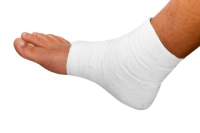 Ohio State University Wexner Medical Center surgeon, Dr. Timothy Miller, recently streamed an Achilles tendon surgery on the video-streaming appPeriscope. Dr. Miller is one of the first among many surgeons using the app hoping that it will help advance medical education. In this day and age of medical education, students and residents are all equally busy which makes the viewing of cases like these increasingly difficult. The streaming session reeled in nearly 170 live viewers, was viewed more than 800 times after during the 24 hours Periscope archived the surgery, and with the help of an assistant in the operating room, five to six questions were answered during the procedure.
Ohio State University Wexner Medical Center surgeon, Dr. Timothy Miller, recently streamed an Achilles tendon surgery on the video-streaming appPeriscope. Dr. Miller is one of the first among many surgeons using the app hoping that it will help advance medical education. In this day and age of medical education, students and residents are all equally busy which makes the viewing of cases like these increasingly difficult. The streaming session reeled in nearly 170 live viewers, was viewed more than 800 times after during the 24 hours Periscope archived the surgery, and with the help of an assistant in the operating room, five to six questions were answered during the procedure.
Achilles tendon injuries need immediate attention to avoid future complications. If you have any concerns contact Dr. Sharon L. Pletcher, DPM of Pennsylvania. Our doctors will treat your foot and ankle needs.
What is the Achilles Tendon?
The Achilles tendon is a tendon that connects the lower leg muscles and calf to the heel of the foot. It is the strongest tendon in the human body and is essential for making movement possible. Because this tendon is such an integral part of the body, any injuries to it can cause severe difficulties and should immediately be presented to a doctor.
What are the symptoms of an Achilles Tendon Injury?
There are various types of injuries that can affect the Achilles tendon. The two most common are Achilles tendinitis and ruptures of the tendon.
Achilles Tendinitis Symptoms
- Inflammation
- Dull to Severe Pain
- Increased blood flow to the tendon
- Thickening of the tendon
Rupture Symptoms
- Extreme pain and swelling in the foot
- Total immobility
Treatment and Prevention
Achilles tendon injuries are diagnosed by a thorough physical evaluation, which can include an MRI. Treatment involves rest, physical therapy, and in some cases, surgery. However, various preventative measures can be taken to avoid these injuries, such as:
- Thorough stretching of the tendon before and after exercise
- Strengthening exercises like calf raises, squats, leg curls, leg extensions, leg raises, lunges, and leg presses
If you have any questions please feel free to contact our office located in State College, PA. We offer the newest diagnostic tools and technology to treat your foot and ankle needs.
Australian Women’s Soccer Team Claims Turf and Heat Caused Blisters on the Feet
 Although the Australian Women’s National soccer team did not win the Women’s World Cup, the Matildas have complained that the switch from real grass to synthetic turf is becoming problematic. The turf produces extreme heat that causes blisters on the feet and other foot ailments. Since the turf is made out of rubber, it absorbs heat faster than grass. Due to a sport sponsorship issue, the Matilda’s were not allowed to wear specific socks that would reduce blisters since the branding would still be visible. Striker Michelle Heyman states, “It’s like you can’t really get grip on your feet and your feet just keep sliding around in your boots...It’s like walking on hot coal with your skin blistering and cracking.”
Although the Australian Women’s National soccer team did not win the Women’s World Cup, the Matildas have complained that the switch from real grass to synthetic turf is becoming problematic. The turf produces extreme heat that causes blisters on the feet and other foot ailments. Since the turf is made out of rubber, it absorbs heat faster than grass. Due to a sport sponsorship issue, the Matilda’s were not allowed to wear specific socks that would reduce blisters since the branding would still be visible. Striker Michelle Heyman states, “It’s like you can’t really get grip on your feet and your feet just keep sliding around in your boots...It’s like walking on hot coal with your skin blistering and cracking.”
Blisters on the feet are very pain and can become problematic if not treated properly. If you have any concerns about your foot and ankle needs contact Dr. Sharon L. Pletcher of Pennsylvania. Our doctor will treat your foot and ankle needs.
Foot Blisters
Foot blisters develop as a result of constantly wearing tight or ill-fitting footwear. This happens due to the constant rubbing from the shoe, which can often lead to pain.
What are Foot Blisters?
A foot blister is a small fluid-filled pocket that forms on the upper-most layer of the skin. Blisters are filled with clear fluid and can lead to blood drainage or pus if the area becomes infected.
How do Blisters Form?
Blisters on the feet are often the result of constant friction of skin and material, usually by shoe rubbing. Walking in sandals, boots, or shoes that don’t fit properly for long periods of time can result in a blister. Having consistent foot moisture and humidity can easily lead to blister formation.
Prevention & Treatment
It is important to properly care for the affected area in order to prevent infection and ease the pain. Do not lance the blister and use a band-aid to provide pain relief. Also, be sure to keep your feet dry and wear proper fitting shoes. If you see blood or pus in a blister seek attention from a doctor.
If you have any questions please contact our office located in State College, PA. We offer the newest diagnostic tools and technology to treat your foot and ankle needs.
Standing on your Feet at Work Can Reduce Chances of Heart Attacks
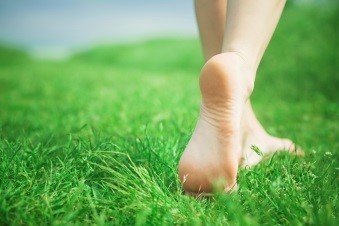 According to a study commissioned by the Public Health England and the Active Working Community Interest Company, standing on your feet for more than half of the day can reduce the risk of heart attacks, cancer, and diabetes. The study states that employers should allow their workers to stand for at least two hours of the day or provide standing desks to significantly reduce the changes or cardio metabolic diseases or premature mortality. The change in work behavior may be uncomfortable at first, but the change in habits is better for long term health benefits.
According to a study commissioned by the Public Health England and the Active Working Community Interest Company, standing on your feet for more than half of the day can reduce the risk of heart attacks, cancer, and diabetes. The study states that employers should allow their workers to stand for at least two hours of the day or provide standing desks to significantly reduce the changes or cardio metabolic diseases or premature mortality. The change in work behavior may be uncomfortable at first, but the change in habits is better for long term health benefits.
While working on the feet, it is important to take the proper care of them. For more information about working on your feet contact Dr. Sharon L. Pletcher, DPM of Pennsylvania. Our doctors will treat your foot and ankle needs.
Working on Your Feet
Standing on your feet for long periods of time can cause stress and pain in your feet. Your whole body may experience change in terms of posture, back pain, bunions, callouses and or plantar warts. There are ways to avoid these conditions with proper foot care, smart choices and correct posture.
Positive Changes
Negative heeled shoe – choosing this shoe places the heel slightly lower than the ball of the foot. These are great for overall foot health. Find shoes that fit you correctly.
Go barefoot – our feet were not designed to be enclosed for hours, or all day. Try allowing yourself to expose your feet to air.
Eliminate Pain
Foot Exercises – performing simple exercises, incorporating yoga and stretches is beneficial. This will allow increased blood flow to the area and muscles of the foot.
Achilles tendon – stretching the foot out flat on the floor, will relax the calf muscles and tendon. These exercises can be performed almost anywhere. Make sure you add these exercises to your daily regimen.
With a little bit of this information and knowing more about foot health, you will notice changes. Foot stretches and proper footwear will help with pain and prevent further issues.
Keep your feet healthy and your body will thank you for it.
If you have any questions please feel free to contact our office located in State College, PA. We offer the newest diagnostic and treatment technologies for all your foot and ankle needs.
Rory MacDonald Sustains Numerous Injuries Including a Broken Foot During UFC Match
 UFC fighter Rory MacDonald suffered a fractured foot and other injuries after losing to Robbie Lawler. According to MacDonald’s manager Firas Zahabi, the injuries occurred quickly after the first round. The welterweight fighter posted a photo to his twitter account stating, “Broken nose broken foot, but I’ll be back.” Although MacDonald’s injuries were extreme, many are calling it one of the best fights of the year due to his admirable efforts despite losing.
UFC fighter Rory MacDonald suffered a fractured foot and other injuries after losing to Robbie Lawler. According to MacDonald’s manager Firas Zahabi, the injuries occurred quickly after the first round. The welterweight fighter posted a photo to his twitter account stating, “Broken nose broken foot, but I’ll be back.” Although MacDonald’s injuries were extreme, many are calling it one of the best fights of the year due to his admirable efforts despite losing.
A broken foot requires immediate medical attention and treatment. If you are seeking treatment for a broken foot, visit Dr. Sharon L. Pletcher of Pennsylvania. Our doctor will assess your injury and provide you with quality treatment.
Broken Foot Causes, Symptoms, and Treatment
A broken foot is caused by one of the bones in the foot typically breaking when bended, crushed, or stretched beyond its natural capabilities. Usually the location of the fracture indicates how the break occurred, whether it was through an object, fall, or any other type of injury.
Common Symptoms of Broken Feet:
- Bruising
- Pain
- Redness
- Swelling
- Blue (foot)
- Numbness
- Cold
- Misshapen
- Cuts
- Deformities
Those that suspect they have a broken foot shoot seek urgent medical attention where a medical professional could diagnose the severity.
Treatment for broken bones varies depending on the cause, severity and location. Some will require the use of splints, casts or crutches while others could even involve surgery to repair the broken bones. Personal care includes the use of ice and keeping the foot stabilized and elevated.
If you have any questions please feel free to contact our office located in State College, PA. We offer the newest diagnostic tools and technologies to treat your foot and ankle needs.
More...
Flip-Flops can be Harmful to the Feet and Body after Prolonged Usage
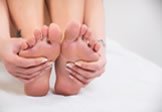 Dr. Braxton Littles appeared on Good Morning America to discuss the negative impacts flip-flops have on the feet. In addition to causing many trips and falls among the shoe wears Dr. Littles states that flops are the cause of many heel and arch problems due to their lack of support. Without providing the foot with the support that it needs problems such as plantar fasciitis, muscle fatigue, and pain within the rest of the body may arise. Littles states that if you must wear flip-flops, it is best not to wear them regularly to avoid foot pain.
Dr. Braxton Littles appeared on Good Morning America to discuss the negative impacts flip-flops have on the feet. In addition to causing many trips and falls among the shoe wears Dr. Littles states that flops are the cause of many heel and arch problems due to their lack of support. Without providing the foot with the support that it needs problems such as plantar fasciitis, muscle fatigue, and pain within the rest of the body may arise. Littles states that if you must wear flip-flops, it is best not to wear them regularly to avoid foot pain.
Flip-flops can cause a lot of damage to the feet and rest of the body. If you have any concerns about your foot and ankle needs contact Dr. Sharon L. Pletcher of Pennsylvania. Our doctor will treat your foot and ankle needs.
Flip-Flops and Feet
Flip-flops are not only very popular, but very convenient, especially in the warmer weather. They allow your feet to breathe and let you move your toes freely. They also go with most attire and can be worn with many different clothing styles. Unfortunately, these type of shoes also have a disadvantage, as they can cause harm to your feet in more ways than you think.
These symptoms include:
- Ball and arch problems in the foot
- Changes to the body’s natural gait
- Blisters
- Ankle Sprains
- Higher risk of infection
- Higher risk of scrapes and cuts to the feet
- Issues in the lower back, legs and ankles
To avoid these symptoms (and minimize your risks), select a pair of flip-flops made of high quality materials that can offer protection. Purchase flip-flops from a reliable manufacturer and be sure to replace them every three to four months. Be sure the soles are firm and not ‘floppy’, or that they don’t bend or wiggle a lot when lifted from the floor.
You can still wear your favorite pair of flip-flops if you so choose, just don’t wear them for extended periods of time, and especially not every day. However, it would be far wiser to purchase a more expensive pair of flip-flops or to refrain from wearing the shoe at all for the sake of your foot health. While these shoes are comfortable, the risks included with wearing them are not.
If you have any questions please feel free to contact our office located in State College, PA. We offer the newest diagnostic tools and technology to treat your foot and ankle needs.
Study Finds BMI Predictive of Foot Joint Pain in Middle Aged Women
 According to the Chingford Women’s Study conducted in the United Kingdom, middle aged women with a higher Body Mass Index (BMI) are more likely to have joint pain in the feet. The study included 1,003 women from the ages 45 to 64 years of age and each participant was seen by a professional at least once a year for twenty years starting in 1988. In between the 10th and 15th year of the study, 639 women had described foot joint pain. Between that period of five years, 49.6% and 47.6% of women had gained or lost weight respectively. At both time periods, women with higher BMI’s had reported significant or persistent foot joint pain compared to women with lower BMI’s. The odds of developing foot pain between the 10th and 15th year of the study rose by 7.9% per unit of BMI.
According to the Chingford Women’s Study conducted in the United Kingdom, middle aged women with a higher Body Mass Index (BMI) are more likely to have joint pain in the feet. The study included 1,003 women from the ages 45 to 64 years of age and each participant was seen by a professional at least once a year for twenty years starting in 1988. In between the 10th and 15th year of the study, 639 women had described foot joint pain. Between that period of five years, 49.6% and 47.6% of women had gained or lost weight respectively. At both time periods, women with higher BMI’s had reported significant or persistent foot joint pain compared to women with lower BMI’s. The odds of developing foot pain between the 10th and 15th year of the study rose by 7.9% per unit of BMI.
Rheumatoid Arthritis and joint pain can become very painful and debilitating if left untreated. For more information about Rheumatoid Arthritis and its symptoms, consult with Dr. Sharon Pletcher of Pennsylvania. Our doctor will assess your condition and provide you with quality foot and ankle treatment.
What Is Rheumatoid Arthritis?
Rheumatoid Arthritis (RA) is an autoimmune disorder in which the body’s own immune system attacks the membranes surrounding the joints. Inflammation of the lining and eventually the destruction of the joint’s cartilage and bone occur, causing severe pain and immobility.
Rheumatoid Arthritis of the Feet
Although RA usually attacks multiple bones and joints throughout the entire body, almost 90 percent of cases result in pain in the foot or ankle area.
Symptoms
- Swelling & pain in the feet
- Stiffness in the feet
- Pain on the ball or sole of feet
- Joint shift and deformation
Diagnosis
Quick diagnosis of RA in the feet is important so that the podiatrist can treat the area effectively. Your doctor will ask you about your medical history, occupation, and lifestyle to determine the origin of the condition. Rheumatoid Factor tests help to determine if someone is affected by the disease.
For more information about rheumatoid arthritis please follow the link below.
If you have any questions, please contact our office located in State College, PA. We offer the newest diagnostic and treatment technologies for all your foot care needs.
Read more on Rheumatoid Arthritis
Women Should Wear Wider Shoes with Lower Heels to Prevent Morton’s Neuroma
 According toDr. Anthony Komaroff of Harvard Medical School, women are at a greater risk because they usually wear tight shoes or high heels. One of the best ways to prevent and treat Morton’s neuroma is to wear low heeled shoes with a wider toe box so the bones, ligaments, muscles and nerves, are not squeezed. Dr. K also recommends massaging the area or visiting your foot care professional for metatarsal pads to help correct any structural problems you may have. If the pain persists, doctors may inject a local anesthetic with corticosteroid to reduce inflammation. Surgery may be needed if the previously mentioned methods do not work.
According toDr. Anthony Komaroff of Harvard Medical School, women are at a greater risk because they usually wear tight shoes or high heels. One of the best ways to prevent and treat Morton’s neuroma is to wear low heeled shoes with a wider toe box so the bones, ligaments, muscles and nerves, are not squeezed. Dr. K also recommends massaging the area or visiting your foot care professional for metatarsal pads to help correct any structural problems you may have. If the pain persists, doctors may inject a local anesthetic with corticosteroid to reduce inflammation. Surgery may be needed if the previously mentioned methods do not work.
Morton’s Neuroma is a very uncomfortable condition to live with. If you think you have Morton’s neuroma contact podiatrist Dr. Sharon L. Pletcher of Pennsylvania. Our doctor will treat your foot and ankle needs.
Morton’s Neuroma
Morton's neuroma is a painful foot condition that commonly affects the areas between the second and third or third and fourth toe, although other areas of the foot are also susceptible. Morton’s neuroma is caused by an inflamed nerve in the foot that is being squeezed and aggravated by surrounding bones.
What Increases the Chances of having Morton’s Neuroma?
- Ill-fitting high heels or shoes that add pressure to the toe or foot
- Jogging, running or any sport that involves constant impact to the foot
- Flat feet, bunions, and any other foot deformities
Morton’s neuroma is a very treatable condition. Orthotics and shoe inserts can often be used to alleviate the pain on the forefront of the feet. In more severe cases, corticosteroids can also be prescribed. In order to figure out the best treatment for your neuroma, it’s recommended to seek the care of a podiatrist who can diagnose your condition and provide different treatment options.
If you have any questions please feel free to contact our office located in State College, PA. We offer the newest diagnostic tools and treatments to treat your foot and ankle needs.
Read more about Morton’s neuroma.
New York Yankees Gets New Orthotics after Foot Flare Up
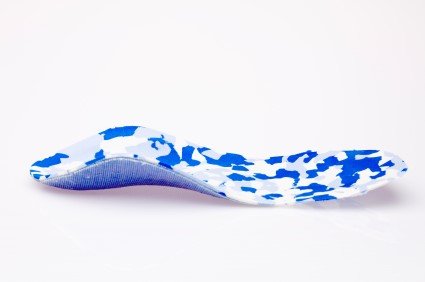 Brian McCann of the New York Yankees has been fitted with new orthotics after experiencing some arch pain while on the field. “I had the same mold for the last three years. The arch on my foot has changed” McCann stated, starting conversation on the importance of regularly ordering new orthotics to reflect changes in the foot. The hitter recalls how nerve wracking it was to have his foot flare up again leaving that asleep and tingly feeling in the foot and lower leg. After having an MRI and CT scan of the foot, McCann has no serious injuries, he just needed new orthotics.
Brian McCann of the New York Yankees has been fitted with new orthotics after experiencing some arch pain while on the field. “I had the same mold for the last three years. The arch on my foot has changed” McCann stated, starting conversation on the importance of regularly ordering new orthotics to reflect changes in the foot. The hitter recalls how nerve wracking it was to have his foot flare up again leaving that asleep and tingly feeling in the foot and lower leg. After having an MRI and CT scan of the foot, McCann has no serious injuries, he just needed new orthotics.
If you are having discomfort in your feet and would like to try orthotics, contact Dr. Sharon L. Pletcher of Pennsylvania. Our doctor will treat your foot and ankle needs.
What are Orthotics?
Orthotics are inserts you can place into your shoes to help with a variety of foot problems such as flat feet or foot pain. Orthotics provide relief and comfort for minor foot and heel pain, but can’t correct serious biomechanical problems in your feet.
Over-the-Counter Inserts
Orthotics come in a wide variety of over-the-counter inserts that are used to treat foot pain, heel pain, and minor problems. For example, arch supports can be inserted into your shoes to help correct over arched or flat feet, while gel insoles are often used because they provide comfort and relief from foot and heel pain by alleviating pressure.
Prescription Orthotics
If over-the-counter inserts don’t work for you, or if you have a more severe foot issue, it is possible to have your podiatrist prescribe custom orthotics. These high quality inserts are designed to treat problems such as abnormal motion, plantar fasciitis, and more severe heel pain. They can even be used to help patients suffering from diabetes by treating foot ulcers and painful calluses, and are usually molded to your feet individually, which allows them to provide full support and comfort.
If you are experiencing minor to severe foot or heel pain, it’s recommended to speak with your podiatrist on the possibilities of using orthotics. A podiatrist can determine which type of orthotic is right for you and allow you to take the first steps towards being pain free.
If you have any questions please feel free to contact our office located in State College, PA. We offer the newest diagnostic tools and technologies to treat your foot and ankle needs.




